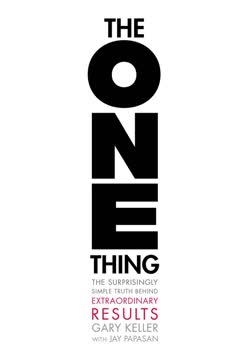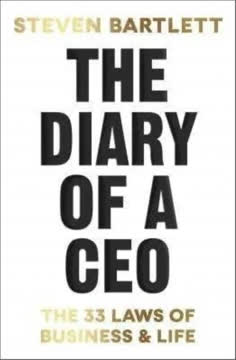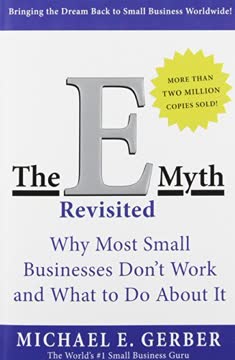اہم نکات
1۔ کاروبار بنائیں، نوکری نہیں: خود روزگار کے جال سے نکلیں
آپ کو قابو پانے کی ضرورت نہیں، بلکہ آپ کے کاروبار کو قابو پانے کی ضرورت ہے۔
خود روزگار کا جال اکثر ان کاروباری افراد کے لیے ایک عام مسئلہ ہوتا ہے جو اپنی کمپنیوں کو اپنی ذاتی پیداوار کے گرد گھماتے ہیں۔ اس طریقہ کار سے طویل اوقات، زیادہ دباؤ، اور محدود ترقی کے امکانات پیدا ہوتے ہیں۔ اس جال سے نکلنے کے لیے:
- ایسے نظام اور عمل تیار کریں جو آپ کی مسلسل موجودگی کے بغیر چل سکیں
- ایک ٹیم بنائیں جو روزمرہ کے کام سنبھال سکے
- اپنی ذمہ داری کو بنیادی پیدا کنندہ سے حکمت عملی کے رہنما میں تبدیل کریں
ایک مالک سے آزاد کاروبار بنانے سے آپ کو یہ فوائد حاصل ہوتے ہیں:
- اپنی کمپنی کی قدر میں اضافہ
- مالی تحفظ میں بہتری
- ذاتی آزادی کا لطف اٹھانا
- اپنے کاروبار کو مؤثر طریقے سے بڑھانا
2۔ لیول تھری نقشہ: مالک کی آزادی کی جانب سفر
یہ ایک تدریجی عمل ہے، کوئی آن/آف سوئچ نہیں۔
لیول تھری نقشہ کاروبار کی ترقی کے مراحل کو ظاہر کرتا ہے، شروع سے لے کر مالک کی آزادی تک:
1۔ لیول ون: منصوبہ بندی اور قابل عمل ثابت کرنا
2۔ لیول ٹو ابتدائی مرحلہ: گاہک حاصل کرنا اور منافع بخش ہونا
3۔ لیول ٹو درمیانی مرحلہ: کاروبار کے بنیادی ڈھانچے اور نظام قائم کرنا
4۔ لیول ٹو اعلیٰ مرحلہ: نظاموں کو بہتر بنانا اور انتظامی ٹیم تشکیل دینا
5۔ لیول تھری: مالک کی آزادی حاصل کرنا
لیول تھری تک پہنچنے کے اہم سنگ میل:
- پانچ بنیادی کاروباری شعبوں میں سے چار میں مضبوط رہنما تیار کرنا
- تمام کاروباری افعال کے لیے واضح عمل درآمد
- کاروبار کی صحت کی نگرانی کے لیے ایک جامع ڈیش بورڈ بنانا
- وژن اور اقدار کو برقرار رکھنے کے لیے روایات اور ثقافت قائم کرنا
3۔ ہر کاروبار کے پانچ بنیادی ستونوں میں مہارت حاصل کریں
کوئی بھی کمپنی بغیر منظم اور مضبوط آپریشنز کے کامیاب نہیں ہو سکتی۔
پانچ بنیادی ستون جو ہر کامیاب کاروبار کی حمایت کرتے ہیں، وہ ہیں:
1۔ سیلز اور مارکیٹنگ: لیڈز پیدا کرنا اور فروخت مکمل کرنا
2۔ آپریشنز: وعدے پورے کرنا اور بیک آفس کے کام سنبھالنا
3۔ ٹیم: عملہ بھرتی، تربیت اور انتظام
4۔ فنانس: نقدی کا انتظام، اکاؤنٹنگ، اور مالی رپورٹنگ
5۔ ایگزیکٹو لیڈرشپ: وژن، حکمت عملی مرتب کرنا اور کمپنی کی رہنمائی
ہر ستون کے لیے توجہ مرکوز کریں:
- نظام اور عمل تیار کرنا
- کلیدی کارکردگی کے اشاریے (KPIs) کی شناخت
- جوابدہی کے ڈھانچے بنانا
- مسلسل بہتری اور عمل کی نفاست
4۔ اپنے کاروبار کو نظام بند بنائیں تاکہ ترقی اور کامیابی ممکن ہو
نظام قابل اعتماد عمل اور طریقہ کار ہیں جو آپ کے کاروبار کو مستقل طور پر بہترین نتائج فراہم کرنے کے قابل بناتے ہیں۔
نظام پر مبنی کاروبار بنانا مالک کی آزادی اور ترقی کے لیے ناگزیر ہے۔ اہم اقدامات یہ ہیں:
1۔ اپنا حتمی کاروباری نظام (UBS) تیار کریں:
- فائل فولڈر کی تنظیمی ترتیب بنائیں
- کاروباری شعبوں کو ذیلی شعبوں میں تقسیم کریں
- موجودہ نظاموں کو شامل کریں اور خالی جگہوں کی نشاندہی کریں
- نئے نظام بتدریج بنائیں
2۔ چار بنیادی کاروباری نظاموں پر توجہ دیں:
- لیڈ جنریشن
- لیڈ کنورژن
- پیداوار اور فراہمی
- وصولیاں
3۔ نظاموں کو مسلسل بہتر بنائیں:
- اپنی ٹیم کو نظام کی تخلیق اور بہتری میں شامل کریں
- فیڈبیک اور ڈیٹا کی مدد سے عمل کو بہتر بنائیں
- نظاموں کا باقاعدہ جائزہ لیں اور اپ ڈیٹ کریں
5۔ مضبوط ٹیم اور قیادت کا ڈھانچہ تیار کریں
کامیاب ترین کمپنیاں اپنے تمام حصوں کو ایک دوسرے کے ساتھ ہم آہنگ کر کے اپنے اعلیٰ مقاصد کو اپنی بنیادی اقدار اور ترجیحات کے مطابق حاصل کرتی ہیں۔
قابل ٹیم اور قیادت کا ڈھانچہ بنانا مالک کی آزادی کے لیے ضروری ہے:
1۔ ہر کاروباری ستون کے لیے کلیدی رہنماؤں کی بھرتی اور ترقی
2۔ واضح کردار، ذمہ داریاں، اور جوابدہی کے ڈھانچے بنائیں
3۔ مؤثر بھرتی، تربیت، اور جائزہ کے عمل نافذ کریں
4۔ ٹیم کے ارکان میں ملکیت اور پہل کی ثقافت کو فروغ دیں
قیادت کی ذمہ داریاں:
- وسیع تر وژن اور حکمت عملی مرتب کرنا
- قیادت کی ٹیم کو بڑھانا اور تیار کرنا
- مستقبل کے چیلنجز اور مواقع کی پیش گوئی
- کمپنی کی ثقافت اور اقدار کو قائم اور مضبوط کرنا
6۔ حکمت عملی کے ساتھ وقت کی کارکردگی کو زیادہ سے زیادہ کریں
وقت کو پیسوں کے بدلے بیچنا لیول ٹو کا ردعمل ہے۔ کم وقت میں زیادہ پیداوار کرنا لیول تھری کا حل ہے۔
وقت کی حکمت عملی اپنائیں تاکہ قیمتی وقت کو اہم سرگرمیوں کے لیے واپس حاصل کیا جا سکے:
1۔ سرگرمیوں کو A، B، C، اور D سطحوں میں تقسیم کریں، ان کی قدر کے مطابق
2۔ D سطح کی سرگرمیوں کو ختم یا تفویض کریں
3۔ اپنے ہفتے کو فوکس ڈے اور پوش ڈے میں منظم کریں
4۔ "چار ڈی" طریقہ استعمال کریں: حذف کریں، تفویض کریں، مؤخر کریں، یا نکال دیں
5۔ اعلیٰ قدر کے کام کے لیے پرائم ٹائم بلاکس مقرر کریں
6۔ کم قدر کی سرگرمیوں کو ختم کرنے کے لیے "رکنے کی فہرست" بنائیں
اہم وقت کی حکمت عملی:
- ہر ہفتے ایک فوکس ڈے مخصوص کریں تاکہ اعلیٰ اثر والی سرگرمیاں کی جا سکیں
- پوش ڈے استعمال کریں تاکہ منصوبے آگے بڑھیں اور روزمرہ کے کام مکمل ہوں
- نتائج کے اصول پر عمل کریں: صبح 10:30 بجے تک اپنے تین بڑے کام مکمل یا شیڈول کریں
- جوابدہی اور ماحول کی ترتیب کے ذریعے نظم و ضبط برقرار رکھیں
7۔ محدود کرنے والے بہانے دور کریں اور ترقی کے لیے عمل کریں
زندگی میں اگر آپ اپنے بہانوں کے حق میں دلیل دیں تو آپ انہیں برقرار رکھتے ہیں۔
عام بہانوں کی نشاندہی کریں اور ان پر قابو پائیں جو کاروباری افراد کو اپنے مقاصد حاصل کرنے سے روکتے ہیں:
1۔ "میں برداشت نہیں کر سکتا": موجودہ حالت کی اصل قیمت اور سرمایہ کاری کے ممکنہ منافع پر غور کریں
2۔ "میرے پاس وقت نہیں": چھوٹے قدم سے شروع کریں، ہفتے میں چند گھنٹے اعلیٰ قدر کی سرگرمیوں کے لیے مختص کریں
3۔ "میں مغلوب ہوں": کاموں کو قابلِ انتظام حصوں میں تقسیم کریں اور مدد یا رہنمائی حاصل کریں
4۔ "ابھی وقت مناسب نہیں": سمجھیں کہ کبھی بھی مکمل وقت نہیں ہوتا، ابھی سے پیش رفت شروع کریں
عمل کرنے کی حکمت عملی:
- اپنے کاروبار کے لیے واضح اور مخصوص اہداف مقرر کریں
- جوابدہی کا نظام بنائیں (مثلاً کاروباری کوچ، ہم منصب گروپ)
- بڑے مقاصد کو چھوٹے، قابل حصول مراحل میں تقسیم کریں
- پیش رفت کا جشن منائیں اور ناکامیوں سے سیکھیں
- مسلسل خود کو تعلیم دیں اور رہنماؤں یا مشیروں سے رہنمائی حاصل کریں
آخری تازہ کاری:
FAQ
What's "Build a Business, Not a Job" about?
- Core Concept: The book by David Finkel focuses on transforming a business from being owner-reliant to owner-independent, allowing the business to thrive without the owner's constant presence.
- Three Levels: It introduces the concept of three levels of business growth, with Level Three being the ultimate goal where the business operates independently of the owner.
- Practical Guidance: The book provides a detailed map and strategies for business owners to scale their businesses while reclaiming their personal time and freedom.
- Real-Life Examples: It includes stories and case studies of business owners who successfully transitioned their businesses to become owner-independent.
Why should I read "Build a Business, Not a Job"?
- Achieve Freedom: If you're a business owner feeling trapped by your business, this book offers a pathway to regain your time and freedom.
- Proven Strategies: The book provides actionable strategies and a clear roadmap to scale your business effectively.
- Avoid Common Pitfalls: It highlights common mistakes business owners make and how to avoid them, saving you time and resources.
- Inspiration and Motivation: Through real-life success stories, the book inspires and motivates you to take the necessary steps toward building a sustainable business.
What are the key takeaways of "Build a Business, Not a Job"?
- Owner-Independent Business: The ultimate goal is to create a business that can operate without the owner's daily involvement.
- Three-Level Model: Understand the progression from a start-up to a sustainable, scalable, and eventually owner-independent business.
- Time Mastery: Learn strategies to reclaim your time and focus on high-value activities that drive business growth.
- Building Blocks: The book outlines eight essential building blocks for creating an owner-independent business, including systems, team, and culture.
How does the "Level Three Map" work in "Build a Business, Not a Job"?
- Detailed Stages: The Level Three Map breaks down the business growth process into distinct stages, from start-up to owner-independent.
- Focus Areas: Each stage has specific focus areas and leverage points to guide business owners in their journey.
- Progression: It emphasizes that building an owner-independent business is a progression, not an on/off switch.
- Strategic Planning: The map includes strategic planning and execution steps to ensure consistent progress toward Level Three.
What are the "8 Building Blocks" mentioned in "Build a Business, Not a Job"?
- Systems: Reliable processes and procedures that empower your business to consistently produce excellent results.
- Team: Leveraging the unique talents of other people to build a strong, independent business.
- Controls: Intelligent checks and balances that put your business in control, not you.
- Scalable Solutions: Removing barriers and unnecessary constraints to allow for business growth.
What are the "5 Functional Pillars" of every business according to "Build a Business, Not a Job"?
- Sales and Marketing: Responsible for defining your market, finding prospective customers, and generating sales.
- Operations: Fulfills the promises made by sales and handles back-office functions.
- Human Resources (Team): Manages hiring, training, and reviewing staff, ensuring compliance with labor laws.
- Finance: Deals with accounting, cash flow management, and financial reporting.
- Leadership: Sets the big-picture vision and strategy for the business, guiding all other pillars.
How can I reclaim my time using strategies from "Build a Business, Not a Job"?
- Identify Value-Creating Activities: Focus on activities that truly create value for your business and eliminate or delegate others.
- Focus Days: Set aside one day each week to work on high-value activities without distractions.
- Prime Time Blocks: Schedule 60-minute blocks during your peak productivity times to focus on important tasks.
- Stop Doing List: Regularly update a list of activities you will stop doing to free up time for more valuable work.
What are the "4 Most Costly Excuses" that hold business owners back according to "Build a Business, Not a Job"?
- "I can't afford it": Many business owners focus on the cost of change rather than the cost of maintaining the status quo.
- "I don't have the time": The book emphasizes the importance of reclaiming time to focus on business growth.
- "I'm overwhelmed": Feeling overwhelmed is common, but the book provides strategies to regain control and clarity.
- "Now's just not the right time": Waiting for the perfect time is a costly mistake; the book encourages starting now.
What are some of the best quotes from "Build a Business, Not a Job" and what do they mean?
- "Do you own your business, or does your business own you?" This quote challenges business owners to evaluate their current situation and strive for a business that operates independently.
- "In life, either you get your excuses or you get your dreams, but you don’t get both." It emphasizes the importance of letting go of excuses to achieve your business and personal goals.
- "The greatest challenge you’ll ever face as an entrepreneur is how to build a business that’s independent of you, the business owner." This highlights the core challenge addressed in the book and the ultimate goal of achieving owner independence.
How does "Build a Business, Not a Job" suggest handling the "Self-Employment Trap"?
- Recognize the Trap: Understand that building a business around personal production leads to being trapped in the business.
- Shift Focus: Move from being a producer to a builder of a business that operates independently.
- Leverage Systems and Team: Develop systems and empower your team to take ownership of business functions.
- Progress Gradually: Accept that escaping the trap is a progression, not an immediate change.
What role does a business coach play according to "Build a Business, Not a Job"?
- Outside Perspective: A business coach provides an external viewpoint to help you see your business clearly and objectively.
- Accountability: Coaches hold you accountable for your actions and decisions, ensuring consistent progress.
- Experience and Guidance: They offer insights and strategies based on their experience to help you avoid costly mistakes.
- Structured Program: The book emphasizes choosing a coaching program that aligns with the goal of building an owner-independent business.
What is the "Ultimate Business System" (UBS) in "Build a Business, Not a Job"?
- Master System: The UBS is the master system for organizing, storing, and refining all your business systems.
- Living Practice: It encourages making systems a living, breathing part of your business culture.
- Organizational Hierarchy: The UBS involves creating a file folder structure to organize business functions and systems.
- Team Involvement: Engage your team in building and refining the UBS to ensure it captures best practices and key knowledge.
جائزے
کاروبار قائم کریں، نوکری نہیں کتاب کو مخلوط آراء کا سامنا کرنا پڑا، جس کی مجموعی درجہ بندی 5 میں سے 3.97 رہی۔ کچھ قارئین نے اسے کاروبار کو بڑھانے کے لیے مفید پایا اور اس کی عملی نصیحتوں کی تعریف کی۔ تاہم، دیگر نے اسے بار بار دہرائی گئی معلومات اور ضرورت سے زیادہ خود تشہیر پر تنقید کا نشانہ بنایا۔ مثبت جائزوں میں کتاب کی اس بصیرت کو سراہا گیا کہ کس طرح ایک ایسا کاروبار قائم کیا جائے جو مالک پر منحصر نہ ہو، جبکہ منفی جائزے اسے گہرائی اور جدت سے خالی محسوس کرتے تھے۔ بعض قارئین نے اضافی وسائل کو مددگار پایا، جب کہ کچھ کو مفت فراہم کردہ مواد سے خاص دلچسپی نہیں ہوئی۔
Similar Books













